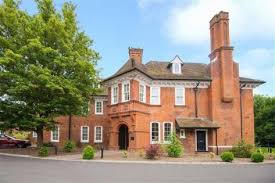With thanks to Marjorie Earl for finding this poem about Australian WW1 VAD nurse Lydia William Falconar Grant, Elder daughter of Peter G. and Emily Grant of Brisbane, Queensland. Member of the Brisbane Branch of the Red Cross Society of Australia. Nurse with the Voluntary Aid Detachment - 2nd General Western Hospital
GRANT, LYDIA WILLIAM FALCONAR VAD – Nurse, Red Cross Unit: BRCS VAD AUSTRALIAN DETACHMENT BRISBANE Born in Scotland in 1880 Died 1 April 1917 - aged 37 - at the military hospital on Ducie Avenue (this was part of 2nd Western General Hospital) on 1st April 1917.
Her Brother, Chesborough G F Grant was in attendance and he gave on the death certificate an address of Whytecliff, Albion, Queensland, Australia. In 1903 and 1905 Lydia was living at Lynton, Norwood Street, Toowong, Brisbane with Emily Mary Graham Grant, Peter George Grant and John Macdonald Grant. She was buried in Southern Cemetery, Manchester, UK.
A Poem (In Memory of the Late Miss Lydia Grant.) published in the Cairn Post, Tuesday, 1st May 1917
Feeling compassion for. the sick and the wounded caused by the nations at strife.
Brought ardent desire to be up and doing her share in the battle of life.
Seeing no longer a reason why she should indolent be,
Announced she had found her vocation-"War work as a V.A.D.
Oft times her work became strenuous and sometimes irksome, too;
But she was ever ready patriotic work to do;
For had she not two brothers fighting "somewhere in France,"
She felt she could not be idle and miss so ennobling a chance.
She was one of the V.A.D.'s chosen the wounded and sick to attend;
Did she flinch when she knew 'twas in England? No! to ask it was but to offend.
Thoughts flew to her home and her mother, had fears lest she'd not give consent;
This was the answer: "God bless you and the mission on which you are bent"
That day on the quay when they parted, her tender emotions were stirred.
Though not regretting the step she was taking, she mingled her tears with theirs;
Then reminding them of the dear ones at the war who were doing their part,
She whispered, "Good-bye, mother dárling," the boat was preparing to start.
Then after anxious weeks of waiting a cable came to tell:
"Safe arrival, uneventful journey, happy and well."
Then letters followed, telling of, the wounded and dead, but
The sorrows of life are teaching a lesson, for which I am thankful," she said.
News of her serious, illness came, brothers sent for by doctor's request;
"O, God"! cried the mother in anguish, grave fears it had stirred in her breast.
In vain was the skill of the doctor, and the nurses who all did their best;
"Thy will be done," sobbed the mother, when she heard they had laid her to rest.
By L.E.R.
"Caringa," Townsville.
Unfortunately, I have not been able to find out who L.E.R. was.



